Understanding the fate of ultrafine particles (UFP), especially from combustion sources, is essential to assess their impact on health and climate. Here, we present simulations of the behavior of UFP in the near-roadway environment (up to 300 m downwind) based on a model with coupled computational fluid dynamics (CFD) and aerosol microphysics. It is found that vehicle-induced mixing (VIM) caused by the combined effect of vehicle wake formation and production of turbulent kinetic energy plays an important role in downwind dilution of pollutants. Various methodologies for simulating VIM are explored, and a computationally efficient approach based on an effective roughness length for vehicle-induced mixing is proposed. Whereas the coagulation behavior of ultrafine particles is relatively well understood, condensation and/or evaporation can have equally large or larger impacts on the number and sizes of particles downwind of a roadway. Through a set of sensitivity simulations, we show that the particle losses are potentially significant via evaporation but depend strongly on several parameters or processes that are poorly understood and difficult to fully constrain for on-road traffic using measurements: the volatility distribution of organic species and gas-phase concentrations of semi-volatile organics.
1.
Introduction
In this paper, we consider the following initial boundary value problem of semilinear pseudo-parabolic equations with conical degeneration
where u0∈H1,n22,0(B), 1<p<n+2n−2 and n=l+1≥2 is the dimension of B, l∈N. Here the domain B=[0,1)×X is regarded as the local model near the conical singularity on conical singular manifolds, where X⊂Rl is a closed compact C∞ manifold. Denoting the interior of B by intB and the boundary of B by ∂B:={0}×X. We use the coordinates (xb,˜x):=(xb,x1,x2,...,xl)∈B for 0≤xb<1, ˜x∈X near ∂B. The conical Laplacian operator is defined as
which is the totally characteristic degeneracy operators on a stretched conical manifold, and ∇B=(xb∂xb,∂x1,...,∂xl) denotes the corresponding gradient operator with conical degeneracy on the boundary ∂B. In particular, we intend to investigate problem (1.1)-(1.3) in the weighted Mellin-Sobolev spaces H1,n22,0(B), and the definition of such distribution spaces will be introduced in Section 2.
The classical pseudo-parabolic equation
defined on a bounded domain Ω⊂Rn with smooth boundary appeared in various physical and biological phenomena. For example, taking u as the flow velocity, the homogeneous form of the model equation (1.4) was introduced to study the incompressible simple fluids with fading memory and the non-steady flow with the Rivlin-Ericksen tensors [47,16]. One can also know more about other applications by referring to [23,24,5].
It is well known that equation (1.4) in the domains contained in classical Euclidean space with regular boundary has been well investigated. Cao et al. [9] considered the Cauchy problem of following model
and obtained the critical global existence exponent and the critical Fujita exponent by integral representation and contraction mapping principle. Subsequently, its uniqueness was proved by Khomrutai in [27] for the case 0<p<1. Furthermore, Li and Du [32] considered the Cauchy problem of
and achieved the global existence and blowup in finite time of solutions with the critical Fujita exponent and the second critical exponent respectively. They also showed that the inhomogeneous term |x|σ affects the decay asymptotic behavior of solutions and accelerates the blowup of solutions. Khomrutai [28] studied the Cauchy problem of sublinear pseudo-parabolic equation
where V(x,t)∼λ(t)|x|σ is a non-autonomous and unbounded potential function with 0<p<1, and established the global existence of solutions by approximation and monotonicity argument. They also derived the precise grow-up rate of solutions and critical growth exponent. In order to figure out the effects of small perturbation on the dynamical of diffusion and reaction, Cao and Yin [8] considered the following Cauchy problem
and revealed that small perturbation may develop large variation of solutions as time evolves. We also recommend that the reader refer to [43] to learn more about the effects of the power index of nonlinearity on the dynamical behavior of the solution. Different from above studies that focus on the influence of the nonlinearities especially the power index on the global well-posedness of the solution, [50,49,36] comprehensively studied equation (1.4) by considering the influences of the initial data on the global well-posedness and corresponding properties of solution. Depending on the potential well depth, they classified the initial data to subcritical initial energy level J(u0)<d, critical initial energy level J(u0)=d and supcritical initial energy level J(u0)>d, and proved the global existence, finite time blow up and asymptotic behavior of solutions with J(u0)≤d. Moreover, thanks to the comparison principle, the global existence and nonexistence of solutions were also obtained at supcritical initial energy level J(u0)>d. When the nonlinear effects are dominated by the logarithmic term, Chen [14] investigated the following nonlinear pseudo-parabolic equation, i.e.,
and proved the global existence and the finite time blow up of solutions under the subcritical and critical initial energy case, respectively. Focusing on the high initial energy level, Xu and Wang et al [51] studied the problem proposed in [50] and gave a sufficient condition on initial data leading to blow up in finite time by the potential well method, at the same time, they also estimated the upper bound of the blowup time. As an important method to reveal the influence of initial data on the dynamical behavior of solutions, the potential well theory can be applied not only to the study of the problem of parabolic equations, but also to the study of the problem for various types of nonlinear evolution equations or systems. Xu and Lian et al [48] investigated the global well-posedness of solutions for coupled parabolic systems in the variational framework, and the initial data leading to the global existence or finite time blow up of the solution are divided. Chen and Xu [15] considered a class of damped fourth-order nonlinear wave equations with logarithmic sources. By examining the effect of weak nonlinear sources on the blow up of the solution, they revealed the confrontation mechanism between the damping structure and the nonlinear source and found the initial data that caused the solution to blow up in infinite time. For related results of polynomial nonlinear sources, we refer to [52]. Furthermore, we suggest the readers refer to [53] for the study of high order nonlinear wave equations, [54,34] for the study of damped nonlinear wave equation problems using improved potential well methods at high initial energy levels, and so on, which are representative recent results, of course we can not list all of the results obtained by the potential well theory here due to the huge amount.
Actually, geometric singularities have attracted considerable interest and have become the focus of extensive physical and mathematical research in recent years. To find static solutions of Einstein's equations coupled to brane sources, Michele [39] studied the generalizations of the so-called "football" shaped extra dimensions scenario to include two codimension branes, which can be transformed into the mathematical problem of solving the Liouville equation with singularities, where the function space he constructed can be described as a sphere with conical singularities at the brane locations. After that some cone solitons (in the case of compact surfaces) were found by Hamilton [25], where cone singularities also arise naturally on the study of such kind of solitons. Not only being widely applied in cosmology and physics, the cone singular manifold itself also brings a lot of interesting topics to pure mathematics, such as the analytic proof of the cobordism theorem [31]. Conical singularities become a hotspot mainly for reasons of two aspects. Firstly, a manifold with conical singularities is one of the most fundamental stratified spaces and the investigation on it is motivated by the desire of understanding the dynamic behavior of the solution of nonlinear evolution equations on such stratified space. Topologically these spaces are of iterated cone type, in which, due to the conical singularity, the classical differential operator cannot be applied to such manifolds. Secondly, the methods developed for the domains with smooth boundaries cannot be directly applied to domains with singularities. It is a challenge and also an interesting problem in the community to restitute the conclusions established on the smooth domain for the problems defined on the conical space.
Inspired by above, it is natural to bring some ideas and develop techniques to establish a comprehensive understanding of operator theory on the manifolds with conical singularities, which was first explored by Kondrat'ev in [29] by introducing the celebrated Mellin-Sobolev spaces Hs,γp(B) as the work space for the partial differential equations, then the theory on the conically degenerate pseudo-differential operator and the weighted Sobolev space on the conical manifolds were summarized by Schulze and Egorov in [45] and [18]. With the development of the study related to the singularity problem, including the study on the partial differential equation on manifolds with conical singularities, there occurs a large number of related results about various kinds of initial boundary value problems for evolution equations. For example, when using the porous medium equation to describe the flow of a substance in a porous medium material, the medium usually shows various irregular shapes in different regions, among which the most essential case is that the boundary of region includes the conical singularities. In order to discuss such situation for the porous medium equation, Lian and Liu [33] studied the initial-boundary value problem of the porous medium equation
in a cone D=(0,∞)×Sn−1, and they proved that if the nonlinear power index p belongs to a suitable interval then the problem has no global non-negative solutions for any non-negative initial datum u0 unless u0≡0. Beside that, they also showed that this problem has global solutions for some u0≥0 when the nonlinear power index p is out of that interval. Considering the following porous medium equation
Roidos and Schrohe [44] obtained some results about the existence, uniqueness and maximal Lp-regularity of a short time solution and showed the short time asymptotic behavior of the solution near the conical point. In addition, the behavior for large times of non-negative solutions to the linear Dirichlet problem of equation (1.5) in cone-like domains was obtained by Andreucci [2]. For more related work, we refer to Laptev [19,30] for the high-order evolution inequalities in cone-like domains and Mazzeo et al [38] for the Ricci flow on asymptotically conical surfaces.
As a differential operator reflecting the diffusion form on the conical singular manifold, the emergence of the cone operator ΔB brings about the first problem that needs to be solved urgently is the existence of solution of the differential equation. Unlike the usual smooth domain, the appearance of cone singularities makes the classical embedding theorem fail, which baffles the proof of the existence theorem. Therefore, in order to overcome the difficulty and obtain the existence of the weak solution by variational method in H1,n22,0(B), Chen et al [12] considered the nonlinear Dirichlet boundary value problems on manifolds with conical singularities
and obtained the existence of non-trivial weak solution. Moreover, they also established the well-known cone Sobolev inequality and Poincarˊe inequality in the weighted Sobolev spaces. Subsequently, Chen et al [13] extended this result to the nonlinear elliptic equations with a general nonlinear source and the critical Sobolev exponents respectively. These works describe the mechanism by which cone differential operators act on the regularity of solutions of differential equations. Of course, differential operators do more than affect the regularity of solutions. The influence of degenerate differential operators on the solutions of nonlinear elliptic equations is also reflected in many other aspects such as the eigenvalue problems and the existence of multiple solutions. Far from being complete, we refer the readers to [22,42,40,41,3] and references therein. It is worth to mention here that the change of the variational structure of equations caused by the non-classical forms of differential operators can bring big challenges to the application of variational techniques [21,7]. Further more, when utilizing the variational techniques the geometrical feature needs to be taken into consideration [20]. In fact we need to overcome the difficulties mentioned above in the application of variational techniques to the parabolic version.
In order to understand the effect of different initial data belonging to H1,n22,0(B) on the well-posedness of the solution, Chen and Liu [11] investigated the following conical degenerate parabolic equation on the conical manifold
and obtained not only the existence of global solutions with exponential decay, but also the blow up in finite time under low initial energy level and critical initial energy level. Recently, Mohsen and Morteza [1] studied the semilinear conical-degenerate parabolic equation
where V(x)∈L∞(intB)∩C(intB) is the positive potential function and g∈L∞(intB)∩C(intB) is a non-negative weighted function. Then they got the results of global solutions with exponential decay and showed the finite time blow up of solutions on manifolds with conical singularities under subcritical initial energy level J(u0)<d.
Our goal is to obtian local and global well-posedness of solutions to problem (1.1)-(1.3). In details, by the potential well method, we classify the initial datum and give a threshold condition, which tells us that as long as the initial datum falls into the specified invariant set and the initial energy satisfies J(u0)≤d, the solution exists as a global one or blow up in a finite time. Moreover, for global solutions, we give an estimation of the asymptotic behavior of them. For the solution that blows up in finite time, we estimate the lower bound of the blowup time. Different from previous proofs in the potential well framework, we integrate the proofs of the sub-critical and critical initial energy cases as a whole part, which makes the results much more concise. Last but not least, we also investigate the finite time blow up of solutions to problem (1.1)-(1.3) at high initial energy levels. By giving a sufficient condition tied to the initial data in weighted Sobolev space H1,n22,0(B), the theorem can not only explain what kind of initial data cause the solution to blow up in finite time, but also get the corresponding upper bound estimate of the blowup time.
The content of this paper is arranged as follows. In Section 2, we give the geometric description of conical singularities, the definitions of the weighted Sobolev spaces and several propositions of the manifold with conical singularities. Then we introduce the potential well structure for problem (1.1)-(1.3) and prove a series of corresponding properties in Section 3. Section 4 is concerned with the local existence and uniqueness theory. In Section 5, we not only prove the invariant manifolds, global existence and decay of solutions to describe the corresponding asymptotic behavior, but also prove the finite time blow up of solutions and estimate the lower bound of blowup time in Theorem 5.2. In Section 6, we give a sufficient condition to obtain the finite time blow up of the solution in Theorem 6.4. In particular, we also estimate the upper bound of the blowup time of the solution. Finally, some remarks and acknowledgements about this paper are given.
2.
Manifolds with conical singularities
In this section, main definitions of the manifold with conical singularities together with a brief description of its properties are given, for more details we refer to [45,18] and the references therein. Furthermore, we introduce some functional inequalities on the manifold with conical singularity, for more applications of these inequalities one can refer to [12,13].
2.1. Geometric description of conical singularities
For l≥2, let X⊂Sl be a bounded open set in a unit sphere of R1+lˆx, and define the straight cone XΔ by
The polar coordinates (ρ,θ) gives us a description of XΔ∖{0} in the form X∧=R+×X, which is called the open stretched cone with the base X, and {0}×X is the boundary of X∧.
Now we extend it to a more general situation by describing the singular space associated with a manifold with conical singularities. A finite dimensional manifold B with finite conical singularities B0={b1,b2,...,bN} has the following two properties:
a) B−B0 is a C∞ manifold.
b) Any bi∈B0 (i=1,2,...,N) has an open neighborhood G in B, such that there is a homeomorphism χ:G→XΔ for some closed compact C∞ manifold X=X(bi), and φ restricts a diffeomorphism φ′:G∖{0}→X∧.
By above assumptions we can define the stretched manifold associated with B. Let B be a C∞ manifold with compact C∞ boundary ∂B≅∪bi∈B0X=X(bi) for which there exists a diffeomorphism
Furthermore, the restriction of this diffeomorphism to Gi−bi is also a diffeomorphism Gi−bi≅Ui−X(bi), where Gi⊂B is an open neighborhood near bi, and Ui⊂B is a collar neiborhood with Ui≅[0,1)×X(bi).
2.2. Cone Sobolev spaces H1,n22,0(B)
The typical differential operators on a manifold with conical singularities, i.e., the so-called Fuchsian type operators in a neighborhood of xb=0, have the following form
with (xb,˜x)∈X∧ and ak(xb)∈C∞(¯R+,Diffμ−k(X))[45,18]. For such singular operators, we introduce the following cone weighted Sobolev space.
Definition 2.1 (The space Hm,γp(Rn+)). For (xb,˜x)∈R+×Rl:=Rn+, m∈N, γ∈R and 1<p<∞, assume u(xb,˜x)∈D′(Rn+), where the dual (C∞0(Rn+))′=D′(Rn+) is the space of all distributions in Rn+. We denote the spaces
for any k∈N, multi-index α∈Nn with k+|α|≤m.
Therefore, Hm,γp(Rn+) is a Banach space with the following norm
Definition 2.2 ([45] The space Hm,γp,0(B)). We give the definition of Hm,γp,0(B) as follows
(ⅰ) Let X be a closed compact C∞ manifold covered by open neighborhoods O={O1,...,ON} of the coordinate. Let the subordinate partition of unity {ψ1,...,ψN} be fixed and charts χj:Oj→Rn, j=1,...,N. Then we say that u∈Hm,γp(X∧) if and only if u∈D′(X∧), whose norm is defined as follows
where 1×χ∗j:C∞0(R+×Rn)→C∞0(R+×Oj) is the pull-back function with respect to 1×χj:R+×Oj→R+×Rn. And the closure of C∞0(X∧) in Hm,γp(X∧) is denoted as Hm,γp,0(X∧).
(ⅱ) Let B be the stretched cone manifolds. Then Hm,γp(B) denotes the subspace of all u∈Wm,ploc(intB) such that
for any cut-off function ω(xb) supported by a collar neighborhood of xb∈(0,1). Moreover, the subspace Hm,γp,0(B) of Hm,γp(B) is defined as follows
where the classical Sobolev space Wm,p0(intB) denotes the closure of C∞0(intB) in Wm,p(˜B) for ˜B as a closed compact C∞ manifold of dimension n containing B as a submanifold with boundary.
2.3. Some inequalities on cone Sobolev spaces
Proposition 1 (Cone Sobolev inequality [12]). Assuming 1≤p<n, 1p∗=1p−1n then for all u(xb,˜x)∈C∞0(Rn+) the following estimate
holds, where γ,γ∗∈R are constants with γ∗=γ−1, and
and
Moreover, for u(xb,˜x)∈H1,γp,0(Rn+), there holds
where C∗=c1+c2.
Proposition 2 (Cone Poincarˊe inequality [12]). Let B=[0,1)×X⊂Rn+ is bounded and 1<p<∞, γ is a constant. If u(xb,˜x)∈H1,γp,0(B) then
where the optimal constant c depends only on B and p.
Proposition 3 (Cone Hölder inequality [13]). If u∈Lnpp(B),v∈Lnp′p′(B) with p,p′∈(1,∞) and 1p+1p′=1, then we have the following cone type Hölder inequality
Proposition 4 (Eigenvalue problem [13]). There exist 0<λ1<λ2≤λ3≤...≤λk≤...→∞, such that for each k≥1, the following Dirichlet problem
admits a non-trivial solution in H1,n22,0(B). Moreover, {ψk}k≥1 constitute an orthonormal basis of the Hilbert space H1,n22,0(B).
3.
Preliminaries
3.1. Some assumptions, functionals and manifolds
In order to state our main results, we shall introduce some definitions and notations as follows. In the sequel, for convenience we denote
Furthermore, we denote ‖⋅‖H1,n22,0(B):=((∇B⋅,∇B⋅)B+(⋅,⋅)B)12. Of course, the norm ‖⋅‖H1,n22,0(B) is equivalent to the norm ‖∇⋅‖Ln22(B), which can be stemmed from Proposition 2.
Throughout the paper, C will be used to denote various positive constants, whose value may change from line to line, and its dependence on other variables will be emphasised only if needed.
Definition 3.1. (Weak solution). A function u is called a weak solution to problem (1.1)-(1.3) on [0,T]×B, if it satisfies
(ⅰ) u∈L∞(0,T;H1,n22,0(B)) and ut∈L2(0,T;H1,n22,0(B));
(ⅱ) u(0)=u0;
(ⅲ) for any η∈H1,n22,0(B), the identity
holds for a.e. t∈[0,T].
Let us introduce the following functionals on the cone Sobolev space H1,n22,0(B) as the potential energy functional
and the so-called Nehari functional
Then J(u) and I(u) are well-defined and belong to C1(H1,N22,0(B),R).
The weak solution u(t) in Definition 3.1 satisfies the conservation of energy, i.e.,
By making use of the functionals above, we define the potential well depth d as follows
where the Nehari manifold
separates the whole space \mathcal{H}^{1,\frac{n}{2}}_{2,0}(\mathbb{B}) into the following two unbounded manifolds
and
Furthermore, we introduce the following potential well
and the outside of the corresponding potential well
3.2. Some lemmas and properties of potential well
Now, we give some corresponding properties of the potential well as follows.
Lemma 3.2 (The properties of the energy functional J(u) ). Assume that u\in \mathcal{H}^{1,\frac{n}{2}}_{2,0}(\mathbb{B}) and \|\nabla_{\mathbb{B}}u\|_{L^{\frac{n}{2}}_{2}(\mathbb{B})}\neq0, we have
(i) \lim_{\lambda\rightarrow0}j(\lambda) = 0 and \lim_{\lambda\rightarrow +\infty}j(\lambda) = -\infty, where j(\lambda): = J(\lambda u);
(ii) there exist a unique \lambda^{*} = \lambda^{*}(u)>0, such that j'(\lambda^{*}) = 0;
(iii) j(\lambda) is strictly increasing on 0\leq\lambda<\lambda^{*}, strictly decreasing on \lambda>\lambda^{*} and takes the maximum at \lambda = \lambda^{*};
(iv) i(\lambda)>0 for 0\leq\lambda<\lambda^{*}, i(\lambda)<0 for \lambda>\lambda^{*} and i(\lambda^{*}) = 0, where i(\lambda): = I(\lambda u).
Proof. (ⅰ) From the definition of J(u), we know that
which gives \lim_{\lambda\rightarrow0}j(\lambda) = 0 and \lim_{\lambda\rightarrow +\infty}j(\lambda) = -\infty.
(ⅱ) An easy calculation shows that
Then taking j'(\lambda) = 0 we obtain that
(ⅲ) By a direct calculation, (3.10) gives j'(\lambda)>0, for 0<\lambda<\lambda^{*},\ j'(\lambda)<0 for \lambda^{*}<\lambda<\infty. Hence, the conclusion of (ⅲ) holds.
(ⅳ) The conclusion follows from
Next we give the relationship between \|u\|_{\mathcal{H}^{1,\frac{n}{2}}_{2,0}(\mathbb{B})} and I(u) in the following lemma.
Lemma 3.3 (The properties of the Nehari functional I(u) ). Suppose that u\in \mathcal{H}^{1,\frac{n}{2}}_{2,0}(\mathbb{B}) and r = \left(\frac{1}{(c^2+1)C^{p+1}_{*}}\right)^{\frac{1}{p-1}} , where c and C_{*} are the optimal constants of the cone Poincar \acute{e} inequality and cone Sobolev inequality respectively.
(i) If 0<\|u\|_{\mathcal{H}^{1,\frac{n}{2}}_{2,0}(\mathbb{B})}<r, then I(u)>0.
(ii) If I(u)<0, then \|u\|_{\mathcal{H}^{1,\frac{n}{2}}_{2,0}(\mathbb{B})}>r.
(iii) If I(u) = 0, then \|u\|_{\mathcal{H}^{1,\frac{n}{2}}_{2,0}(\mathbb{B})}\geq r or \|u\|_{\mathcal{H}^{1,\frac{n}{2}}_{2,0}(\mathbb{B})} = 0.
Proof. (ⅰ) From 0<\|u\|_{\mathcal{H}^{1,\frac{n}{2}}_{2,0}(\mathbb{B})}<r, we have
Then by the definitions of r and I(u) we obtain that I(u)>0.
(ⅱ) It is easy to see that \|u\|_{\mathcal{H}^{1,\frac{n}{2}}_{2,0}(\mathbb{B})}\neq 0 by I(u)<0 . Combining cone Poincar \acute{\rm e} inequality and cone Sobolev inequality, it follows that
then we get
(ⅲ) If I(u) = 0 and \|u\|_{\mathcal{H}^{1,\frac{n}{2}}_{2,0}(\mathbb{B})}\neq 0 , then by
we get \|u\|_{\mathcal{H}^{1,\frac{n}{2}}_{2,0}(\mathbb{B})}\geq \left(\frac{1}{ (c^2+1)C^{p+1}_{*}}\right)^{\frac{1}{p-1}} = r.
The depth d can be estimated as follows.
Lemma 3.4 (The potential well depth). Suppose that 1<p<\frac{n+2}{n-2} and d is defined as (3.4). Then we have
where c is the best coefficient of the cone Poincar \acute{ e} inequality.
Proof. Suppose that u\in \mathcal{N}, then \|u\|_{\mathcal{H}^{1,\frac{n}{2}}_{2,0}(\mathbb{B})}\ge r from Lemma 3.3. Thus according to the definition of J(u) , I(u) and cone Poincar \acute{\rm e} inequality, we arrive at
which gives (3.11).
Lemma 3.5 (Osgood Lemma, [10]). Let \rho:[t_0,T]\rightarrow [0,\alpha] be a measurable function, \gamma is a locally integrable, positive function defined on [t_0,T] , \mu:[0,\alpha]\rightarrow [0,+\infty) is a nondecreasing, continuous function and \mu(0) = 0 , a\ge0 is a constant. If
holds almost everywhere for t\in[t_0,T] , then
is true almost everywhere for t\in[t_0,T] when a>0 , where M(x) = \int^{\alpha}_{x}\frac{{\rm d}s}{\mu(s)} . In addition, when a = 0 and M(0) = \infty , \rho(t) = 0 holds almost everywhere for t\in[t_0,T] .
4.
Local existence
In this section, we prove the local existence of the solution of problem (1.1)-(1.3). The local existence theorem is given as follows,
Theorem 4.1 (Local existence). Suppose that u_{0}\in\mathcal{H}^{1,\frac{n}{2}}_{2,0}(\mathbb{B}) . Then there exist T>0 and a unique weak solution u\in C([0,T],\mathcal{H}^{1,\frac{n}{2}}_{2,0}(\mathbb{B})) of problem (1.1)-(1.3) on [0,T]\times\mathbb{B} . Moreover, if
then
Proof. We divide the proof into 2 steps.
Step 1. Local exisence. We prove the local existence of the solution to problem (1.1)-(1.3) by virtue of the Galerkin method and the compactness property [35]. For the initial data u_0\in \mathcal{H}^{1,\frac{n}{2}}_{2,0}(\mathbb{B}) , let R^2: = 2\|\nabla_\mathbb{B}u_0\|^2_{L^{\frac{n}{2}}_{2}(\mathbb{B})} . For every m\ge1 , let \Psi_{m} = \text{Span}\{\psi_{1}, \psi_{2},...,\psi_{m}\} , where \{\psi_{j}\} is the orthonormal complete system of eigenfuctions of -\Delta_{\mathbb{B}} in \mathcal{H}^{1,\frac{n}{2}}_{2,0}(\mathbb{B}) such that \|\psi_{j}\|_{L^{\frac{n}{2}}_{2}(\mathbb{B})} = 1 for all j . Then, \{\psi_{j}\} is orthonormal and complete in L^{\frac{n}{2}}_{2}(\mathbb{B}) and \mathcal{H}^{1,\frac{n}{2}}_{2,0}(\mathbb{B}) by Proposition 4, and we denote by \{\lambda_{j}\} the corresponding eigenvalues. Let
such that u_{m0}\in\Psi_{m} and
For all m\ge1 , we seek C^1 -continuous functions g_{m1}(t),...,g_{mm}(t) to form an approximate solution to problem (1.1)-(1.3) of the form
which solves the problem
for j = 1,2,...,m and t\ge0 . Problem (4.4) is equivalent to the following systems of ODEs
One can deduce that for any fixed m there exists a t_m>0 and a unique solution g_{mj}\in C^1[0,t_m] of the Cauchy problem (4.5) by the Cauchy-Peano theorem since f(t): = (|u_m(t)|^{p-1}u_m(t),\psi_j)_{\mathbb{B}} is continuous with respect to t . Multiplying (4.4) by g_{mjt}(t) and summing for j , we have
which tells us that for all t\in[0,t_m] ,
For the last term in equation (4.6), by using the cone Hölder inequality (Proposition 1), cone Sobolev inequality (Proposition 3) and Young's inequality, we deduce
which together with (4.6) gives,
Integrating (4.8) over [0,t] , we obtain
which combining the formula (4.2) and the fact R^2: = 2\|\nabla_\mathbb{B}u_0\|^2_{L^{\frac{n}{2}}_{2}(\mathbb{B})} shows that there exists some m_0\in \mathbb N^+ such that
for t\in[0,t_m] and m\ge m_0 . In order to estimate the first term in (4.9), one can apply the Osgood lemma [10,Lemma 5.2.1] as follows.
For any fixed m\ge m_0 , let \rho(t): = \|\nabla_{\mathbb{B}}u_{m}(t)\|^2_{L^{\frac{n}{2}}_{2}(\mathbb{B})} , t\in[0,t_m] , since g_{mj}\in C^1[0,t_m] , we deduce that \max\limits_{t\in[0,t_m]}|g_{mj}(t)| is bounded, j = 1,...,m , then
which implies that \rho:[0,t_m]\rightarrow [0,\alpha_m] is a measurable function. Now we pick
which satisfies \mu(0) = 0 , and a = R^2 , then,
Therefore, we have
that is,
By a simple calculation, we obtain
Taking
it follows from estimates (4.9)-(4.11) that
where
Then combining with (4.12) and Proposition 1 we obtain
for all t\in [0, T] and m\geq m_0 , which means
Hence, by the Aubin-Lions-Simon Lemma [46] and the weak compactness there exist a u\in C([0, T]; \mathcal{H}^{1,\frac{n}{2}}_{2,0}(\mathbb{B})) and a subsequence of \{u_{m}\} , which is still denoted by \{u_{m}\} , such that
which together with the Lions Lemma [35,Chap. 1,p12] deduce that
Then for each j fixed, let m\rightarrow \infty in (4.4), we have
for a.e. t\in [0, T] and every j = 1, 2, \cdots . By the fact that \{\psi_{j}\} is the complete orthonormal basis in \mathcal{H}^{1,\frac{n}{2}}_{2,0}(\mathbb{B}) , we have
for a.e. t\in [0, T] and every \eta\in\mathcal{H}^{1,\frac{n}{2}}_{2,0}(\mathbb{B}) . By the convergence (4.14) and formula (4.12), we have
Moreover, it follows from the fact u_m\rightarrow u in C([0, T]; L^{\frac{n}{2}}_{2}(\mathbb{B})) that
which combining with (4.2) implies that
Thus, u\in C([0, T]; \mathcal{H}^{1,\frac{n}{2}}_{2,0}(\mathbb{B})) is a weak solution of problem (1.1)-(1.3) on [0,T]\times\mathbb{B} .
Step 2. Uniqueness. Suppose that there are two solutions u and v to problem (1.1)-(1.3) corresponding to the initial data u_0\in \mathcal{H}^{1,\frac{n}{2}}_{2,0}(\mathbb{B}) . Then, w = v-v solves the following problem
Since w\in C([0, T]; \mathcal{H}^{1,\frac{n}{2}}_{2,0}(\mathbb{B})) , one can multiply both side of equation (4.16) by w(t) and show that
For the last term in equation (4.19), by using the cone Hölder inequality (Proposition 1), cone Sobolev inequality (Proposition 3) and estimate (4.15), we deduce
with C_1(R) = 4p C_*^{p+1}(C(R))^{\frac{p-1}{2}} , which together with (4.19) gives,
Applying the Gronwall inequality to (4.20) and making use of (4.17), we have
which leads to the uniqueness of weak solution.
Concerning formula (4.11) we observe that the local existence time T merely depends on the norms of the initial data. Therefore, by using the similar idea as shown in [4], the solution can be continued as long as \|u\|^2_{\mathcal{H}^{1,\frac{n}{2}}_{2,0}(\mathbb{B})} remains bounded. In details, taking u(\cdot,T) as the initial data and repeating above argument, we know that the problem (1.1)-(1.3) has a unique weak solution on the interval [0,T_1] ( T_1>T ). After an iteration process, we get a single increasing sequence \{T_k\}^{\infty}_{k = 1} such that the problem (1.1)-(1.3) has a unique weak solution on [0,T_k] , where T_k has two possibilities for sequence \{T_k\}^{\infty}_{k = 1} , that either T_{\max} = \lim\limits_{k\rightarrow \infty}T_k is finite, or T_{\max} = \infty . Moreover, if T_{\max} = \infty , then the problem (1.1)-(1.3) possesses a unique global solution. If T_{\max}<+\infty , then
In fact, if
then for any t_0\in(0,T_{\max}) , by taking u(\cdot,t_0) as the initial data, we know from the above argument that there exists a T^*>0 dependent on M and independent on t_0 such that the problem (1.1)-(1.3) has a unique weak solution on the interval [t_0,t_0+T^*] . Due to the arbitrariness of t_0\in(0,T_{\max}) , the weak solution of problem (1.1)-(1.3) can be extended to the interval [0,T_{\max}+\varepsilon] with arbitrary positive \varepsilon>0 , which contradicts the maximal interval [0,T_{\max}) . This contradiction shows that (4.21) holds.
Moreover, we give the following corollary.
Corollary 1 (Blow-up of the weak solution). Suppose that u is a weak solution of problem (1.1)-(1.3), which can be ensured by Theorem 4.1, if T_{\max}<\infty , then we have
Proof. Recalling the definition of energy functional J(u) in (3.1) and the energy relation (3.3), we get
Combining with the following Gagliardo-Nirenberg interpolation inequality
for \frac{1}{B_1} = \left(\frac{1}{B_2}-\frac{1}{n}\right)a+\frac{1-a}{B_3}\ \text{and}\ 0<a<1 , we have
where B_1 = p+1 , B_2 = 2 and B_3 = s with \frac{n(p-1)}{2}<s<p+1 such that 0<a = \frac{2n(p-1-s)}{(p+1)(sn+2s-ns)}<\frac{2}{p+1} . Thus we have
which implies that \lim\limits_{t\rightarrow T_{\max}}\|u(t)\|^2_{L^{\frac{n}{s}}_{s}(\mathbb{B})} = \infty.
5.
Sub-critical and critical initial energy cases
In this section, we study the well-posedness of solutions of problem (1.1)-(1.3) in the case of sub-critical and critical initial energy levels. The succeeding result is given to show the invariant sets of the solution for problem (1.1)-(1.3).
Lemma 5.1. Suppose that u_{0}\in \mathcal{H}^{1,\frac{n}{2}}_{2,0}(\mathbb{B}) and J(u_0)<d , then
(i) all weak solutions of problem (1.1)-(1.3) belong to \mathcal{W} provided that u_0\in \mathcal{W};
(ii) all weak solutions of problem (1.1)-(1.3) belong to \mathcal{V} provided that u_0\in \mathcal{V}.
Proof. (ⅰ) Suppose that J(u_0)<d , I(u_0)>0 and u(t) is the corresponding solution of problem (1.1)-(1.3). If u_0 = 0 , then u(t) = 0 , i.e., u(t)\in \mathcal{W} . If u_0\in \mathcal{N}_+ , i.e., I(u_{0})>0 , we claim that u(t)\in \mathcal{N}_+ for 0\le t<T . By reduction to absurdity, provided that there exists a t_{0}\in (0,T) such that u(t_{0})\in \mathcal{N} for the first time and u(t)\in \mathcal{N}_+ for 0\le t<t_0 , i.e., I(u(t))>0 for t\in [0,t_0) and I(u_0) = 0 . Since u(t_{0}) is a solution of problem (1.1)-(1.3), by the conservation of energy, it follows that
for any t_{0}\in (0,T) . However, by the definition of d and I(u(t_{0})) = 0 , it implies that J(u(t_{0}))\ge d , which contradicts (5.1). Thus, u(t)\in \mathcal{N}_+\subset\mathcal{W} for any t\in [0,T) .
(ⅱ) Similar to the proof of (i), we can obtain that u(t)\in \mathcal{V} for t\in [0,T) provided u_0\in \mathcal{V} .
Theorem 5.2 (Global existence and asymptotic behavior). Suppose that u_{0}\in\mathcal{H}^{1,\frac{n}{2}}_{2,0}(\mathbb{B}) and J(u_0)\le d . If u_0\in \mathcal{W}, then problem (1.1)-(1.3) admits a unique global weak solution u\in L^{\infty}(0,\infty;\mathcal{H}^{1,\frac{n}{2}}_{2,0}(\mathbb{B})) with u_{t}\in L^{2}(0,\infty;\mathcal{H}^{1,\frac{n}{2}}_{2,0}(\mathbb{B})) and satisfies
Moreover, the solution satisfies the estimate
where \beta = 1-C^{p+1}_{*}\left(\frac{2(p+1)(c^2+1)}{p-1}J(u_0)\right)^{\frac{p-1}{2}}.
Proof. We divide the proof into two parts, which are the global existence and the asymptotic behavior.
Part Ⅰ: Global existence.
First, we give the global existence of the solution of problem (1.1)-(1.3) for J(u_0)<d .
Since the conclusion is trivial when u_0 = 0 , we only consider the case u_{0}\in \mathcal{W}\backslash\{0\} . From Theorem 4.1, let u be the weak solution of problem (1.1)-(1.3) corresponding to the initial data u_0 . It follows from (3.1) and (3.2) that
and
for all t\in [0, T_{\max}) . Then by Lemma 5.1 we deduce that
which implies
Thus, the combination of (5.3)-(5.5) and Proposition 1 shows that
Therefore, by virtue of the Continuation Principle, it follows T_{\max} = \infty , i.e., u \in L^{\infty}(0,\infty;\mathcal{H}^{1,\frac{n}{2}}_{2,0}(\mathbb{B})) with u_{t}\in L^{2}(0,\infty; \mathcal{H}^{\frac{n}{2}}_{2}(\mathbb{B})) is a global weak solution of problem (1.1)-(1.3) corresponding to initial data u_0 and satisfies the estimate (5.2).
For the case J(u_0) = d , we apply the idea of scalar transformation to get the corresponding global existence result.
Let \gamma_k = 1-\frac{1}{k} , k\in \mathbb{N}^+ . Then there exists a sequence \{u_{k}(0)\} such that u_{k}(0) = \gamma_{k}u_0 . Consider the corresponding initial boundary value problems
according to Theorem 4.1 and the estimate (5.6), we know that the weak solution u to problem (5.7)-(5.9) corresponding to the initial data u_k(0) satisfies
where T_{\max} is the maximal existence time of the solution u .
By I(u_0)>0 , it follows from (ⅲ)-(ⅳ) in Lemma 3.2 that \lambda = \lambda(u_0)\in(0,1) and \lambda^*>1 , which implies that I(u_0)>I(\gamma_ku_0)>0 and J(\gamma_ku_0)<J(u_0)\le d . By the continuity of I(u) , J(u) with respect to u , we can choose a sufficiently large k such that \|u_{k}(0)-\gamma_{k}u_0\|_{\mathcal{H}^{1,\frac{n}{2}}_{2,0}(\mathbb{B})}<\frac{1}{k} with I(u_{k}(0))>0 and J(u_{k}(0))<d , which means u_{k}(t)\in \mathcal{W} for [0,T_{k}) by Lemma 5.1.
Since \lim\limits_{k\rightarrow \infty}\gamma_{k} = 1 , then for u_{k}(0)\in \mathcal{W} we have
and
then we can obtain the boundness of u_{k} by the same way in the previous case J(u_0)<d , namely (5.6), and the global existence result follows.
Part Ⅱ: Asymptotic behavior.
In this part, we start with the claim that u(t)\in\mathcal{W} for t\in[0,\infty) when J(u)\le d .
If J(u_0)<d , then by the assumption that I(u_0)>0 we can derive immediately that u(t)\in\mathcal{W} for t>0 from Lemma 5.1.
If J(u_0) = d , then we conclude that there exists an enough small t_0 such that I(u(t))>0 for t\in[0,t_0) through the continuity of I(u(t)) with respect to t and I(u_0)>0 . Next, we assert that I(u(t))>0 for t\in[t_0,\infty) . Arguing by contradiction, assuming that t_1\in[t_0,\infty) is the first time such that I(u(t_1)) = 0 , then by the definition of the potential well depth, we have
In addition, by the energy identity (3.3), we have
which tells us that J(u(t_1)) = d and u_t\equiv 0 for 0<t<t_1 . On the other hand, as u is a global weak solution of problem (1.1)-(1.3), we directly obtain the following equation by multiplying (1.1) by u and integrating over \mathbb{B}
Then from the definition of I(u) and I(u(t))>0 for t\in[0,t_1) , it follows that
that is,
which contradicts with u_t\equiv 0 for 0<t<t_1 . Hence, we conclude I(u(t))>0 for t\ge0 .
Since u(t)\in \mathcal{W} for t\ge0 of the case J(u_0)\le d , namely I(u(t))>0 for 0\leq t<\infty , and it is easy to derive that the energy functional J(u(t)) is non-increasing from the energy identity (3.3), then we have
where c is the optimal constant in Proposition 2. Moreover,
Then from (5.14) we define
Hence, taking \beta: = 1-\alpha>0 , we obtain from (5.15) that
which gives
On the other hand, by the definition of I(u) we have
Then by Gronwall's inequality we can obtain
Theorem 5.3 (Finite time blow up and lower bound estimate of blowup time). Suppose that u_{0}\in\mathcal{H}^{1,\frac{n}{2}}_{2,0}(\mathbb{B}) and J(u_0)\le d . If u_0\in \mathcal{V} , then u(t) blows up in finite time, i.e., there exists a T >0 such that
Moreover, T is bounded below, which can be estimated by
Proof. Firstly, by Theorem 4.1, we already have the local existence for u_0\in\mathcal{H}^{1,\frac{n}{2}}_{2,0}(\mathbb{B}) , then arguing by contradiction, we suppose that the solution u exists globally in time and here we just consider nontrivial u since the trivial ones do not agree the initial condition, thus are not solutions of problem (1.1)-(1.3). Then we define an auxiliary function as
For t\in[0,\infty) we can compute its derivative as follows
and further by (1.1) and (3.2) we have
Next, we will reveal that the solution actually does not exist globally by showing that M(t) tends to infinity in finite time. However, it is easier to demonstrate that M^{-\gamma}(t) has a zero point, where the exponent -\gamma is a negative constant. Therefore, we take the latter as the proof scheme. Before that, we claim that M^{-\gamma}(t) is concave for sufficiently large t by constructing a differential inequality with M(t) . Recalling (3.3) and (5.3), for t\in[0,\infty) we can obtain by (5.19) and (5.20) that
where c is the optimal constant of the Cone Poincar \acute{\rm e} inequality (see Proposition 2). Notice that
hence
From (5.18), (5.21) and (5.22), making use of the Hölder inequality, we have for t\in[0,\infty)
To estimate the right hand side of (5.23), we claim first that u(t)\in \mathcal{V} for t\in [0,\infty) , and the proof of this claim is similar with the proof in the second step of Theorem 5.2, for which we omit it here. Therefore, we have I(u(t))<0 for t\ge0 , then by the density of the real number we can derive that there exists a \delta>0 such that
Integrating over the both sides of (5.24) from 0 to t , we get
By applying the same operation that we took for (5.24), we have
Thus by (5.23), for sufficiently large t>0 we have
By direct computation we can get that
Let \gamma = \frac{p-1}{2}>0 and N(t): = M^{-\gamma}(t) , then (5.28) implies that N''(t)<0 for sufficiently large t>0 according to (5.27) and the facts that \gamma>0 and M(t)\ge0 , which implies that N(t) is concave for sufficiently large t>0 .
Note first that there exists a sufficiently small \tilde{t}>0 such that the non-trivial u exists locally for t\in(0,\tilde{t}] by Theorem 4.1, which claims that N(t) = M^{-\gamma}(t)>0 for t\in(0,\tilde{t}] . Then we assert that N(t) is decreasing for t\in(0,\infty) . Recalling that M'(t)>0 for t\in(0,\infty) , hence
which makes N(t) keep falling for t>0 and guarantees that the zero point can be reached.
In fact, the case of the asymptote won't occur since N(t) is concave for sufficiently large t>0 , which forces the curve of N(t) to hit the t -axis for sufficiently large t>0 and ensures the existence of the zero point. Hence there exists a 0< T<\infty such that
which means also M(t) = \int^{t}_{0}\|u\|^{2}_{\mathcal{H}^{1,\frac{n}{2}}_{2,0}(\mathbb{B})}{\rm d}\tau\rightarrow \infty \ \text{as}\ \ t\rightarrow T^{-}, and contradicts the hypothesis of global existence, thus u blows up in finite time.
Next, we seek the lower bound of the blow up time. By (5.20) we have
Then Proposition 2, (5.19) and (5.29) imply
By (5.25) we have already known M'(t)>0 for t\in[0,T) , thus we can divide (5.30) by (M'(t))^{\frac{p+1}{2}} and get the following inequality,
Integrating the inequality (5.31) from 0 to t , we have
Let t\rightarrow T in (5.32), since M'(t) = \|u(t)\|^{2}_{\mathcal{H}^{1,\frac{n}{2}}_{2,0}(\mathbb{B})}>r^2 by (ii) of Lemma 3.3, we can conclude that
6.
Sup-critical initial energy case
In this section we give the finite time blow up result for the sup-critical initial energy case, for which we introduce the following three lemmas first.
Lemma 6.1 ([26]). Suppose that a positive, twice-differentiable function \psi(t) satisfies
where \theta>0 is a constant. If \psi(0)>0 and \psi'(0)>0 , then there exists a t_1 with 0<t_1\le \frac{\psi(0)}{\theta\psi'(0)} such that \psi(t) tends to infinity as t\rightarrow t_1 .
Lemma 6.2. Suppose that J(u_0)>0 and u_0\in\mathcal{V} , then the map
increases strictly while u(t)\in \mathcal{V} for t\in[0,T_0] , where T_0 is a positive constant.
Proof. Firstly, an auxiliary function is defined as follows
Then it follows from (1.1) that
Hence by u(t)\in \mathcal{V} for t\in[0,T_0] we get
which implies that the map
is strictly increasing for t\in[0,T_0] .
Lemma 6.3 (Invariant set \mathcal{V} ). Assume that u_0 satisfies
where c is the optimal constant in Proposition 2, then u(t)\in \mathcal{V} for t\in[0,T) , where T\le +\infty is the maximal existence time of the solution.
Proof. First we claim that u_0\in \mathcal{V} by (6.4), i.e. u(t)\in \mathcal{V} for t = 0 . By the definition of J(u(t)) (3.1) we have
thus by (6.4) and (6.5) we can drive that I(u_0)<0 , namely u_0\in \mathcal{V} .
Then we prove that u(t)\in \mathcal{V} for t\in(0,T) . Since I(u_0)<0, we have I(u(t))<0 on [0,t_0) for sufficiently small t_0>0 according to the continuity of I(u(t)) with respect to t . Arguing by contradiction, if I(u(t)) doesn't remain negative on [0,T) , then there must exist a t_1\in [t_0,\infty) such that I(u(t_1)) = 0 for the first time. It follows from Lemma 6.2 that the map t\mapsto \|u(t)\|^2_{\mathcal{H}^{1,\frac{n}{2}}_{2,0}(\mathbb{B})} increases strictly for t\in[0,t_1) , by which and (6.4) we get
then from the continuity of \|u(t)\|^2_{\mathcal{H}^{1,\frac{n}{2}}_{2,0}(\mathbb{B})} with respect to t , we can obtain
On the other hand, recalling the definition of J(u(t)) and (3.3), we have
then applying the Cone Poincar \acute{\rm e} inequality (Proposition 2) to (6.8) with I(u(t_1)) = 0 , we have
which contradicts (6.7), thus we can drive that u(t)\in\mathcal{V} for t\in [0,T) .
Next we give the blow up results for arbitrary positive initial energy as follows:
Theorem 6.4 (Finite time Blow up with J(u_0)>0 ). Let u_{0}\in\mathcal{H}^{1,\frac{n+1}{2}}_{2,0}(\mathbb{B}) . If u_0 satisfies (6.4), then u(t) blows up in finite time. Furthermore, the upper bound of blowup time can be estimated by
where \sigma: = \frac{p-1}{2(c^2+1)(p+1)}\|u_0\|^2_{\mathcal{H}^{1,\frac{n}{2}}_{2,0}(\mathbb{B})}-J(u_0) .
Proof. Similar as Theorem 5.2, we also divide the proof into two parts, which are the finite time blow up and the estimating of the upper bound of the blow up time.
Part Ⅰ: Finite time blow up.
Firstly, Theorem 4.1 has asserted the local existence of the solution, then arguing by contradiction, we suppose that u(t) exists globally in time, i.e. the maximal existence time T = \infty .
Now we take a sufficiently small \varepsilon>0 and a positive constant c_0>0 such that
and define a new auxiliary function for t\in[0,\infty) as follows
where M(t) is the auxiliary function defined before in (5.18). Hence for t\in[0,\infty) ,
and
Set \xi: = 4c_0-\varepsilon^{-2}\|u_0\|^4_{\mathcal{H}^{1,\frac{n}{2}}_{2,0}(\mathbb{B})}, then (6.10) indicates \xi>0. Thus for t\in[0,\infty) we have
which tells
By (6.13), for t\in[0,\infty) we get
Then from (6.13) and (6.14), for t\in[0,\infty) we can derive that
where \beta>0 is a positive constant that will be determined in the sequel.
Next, we estimate the term M''(t) . Testing the both sides of (1.1) by u , for t\in[0,\infty) we have
By (6.4), we can take \beta such that
Notice by Lemma 6.3 that I(u(t))<0 for t\in[0,+\infty) , then combining (6.16) with (3.3), for t\in[0,\infty) we see
The application of Cone Poincar \acute{\rm e} inequality asserts
Putting (6.19) into (6.18), for t\in[0,\infty) we have
By (6.16), H \ddot{\rm o} lder and Young's inequalities, for t\in[0,\infty) we estimate the term (M'(t))^2 as follows
Then from (6.20), (6.21) and (6.15), for t\in[0,\infty) we have
where
Taking \gamma: = \frac{2(p-1)}{(c^2+1)(p+1)}\|u_0\|^2_{\mathcal{H}^{1,\frac{n}{2}}_{2,0}(\mathbb{B})}-4\beta J(u_0), then (6.17) ensures \gamma>0. Choosing \varepsilon such that
then recalling that \|u(t)\|^2_{\mathcal{H}^{1,\frac{n}{2}}_{2,0}(\mathbb{B})} is decreasing with respect to t by Lemma 6.2, for t\in[0,\infty) we obtain
Thus
Since P(0) = c_0>\frac{1}{4}\varepsilon^{-2}\|u_0\|^4_{\mathcal{H}^{1,\frac{n}{2}}_{2,0}(\mathbb{B})}>0 and P'(0) = \varepsilon^{-1}\|u_0\|^4_{\mathcal{H}^{1,\frac{n}{2}}_{2,0}(\mathbb{B})}>0, by Lemma 6.1 we can conclude that there exists a 0<T<\infty such that
According to the definition of P(t) , i.e. (6.11), we can conclude that
which claims the blow up of the solution.
Part Ⅱ: Upper bound of the blow up time
In Part I we have draw the conclusion that the maximal existence time T is finite, next, we estimate the upper bound of blowup time. For t\in[0,T) , we define
where \mu>0 and \nu>0 are constants, which will be determined later in the process of argumentation. Thus we have
then it follows from (3.3), Proposition 2 and (6.4) that
Furthermore, we obtain \psi'(t)\ge\psi'(0) = 2\mu(t+\nu)>0 via (3.3), which implies \psi(t)\ge\psi(0) = T\|u_0\|^2_{\mathcal{H}^{1,\frac{n}{2}}_{2,0}(\mathbb{B})}+\mu\nu^2>0 for all t\in[0,T) .
On the other hand, we can derive that
where
To estimate (6.25) clearly, we will show that I_5-I_6>0 ,
then by the Cauchy-Schwartz inequality we get
where k_1(t): = \int^t_0\|u(\tau)\|_{\mathcal{H}^{1,\frac{n}{2}}_{2,0}(\mathbb{B})}{\rm d}\tau and k_2(t): = \int^t_0\|u_t(\tau)\|_{\mathcal{H}^{1,\frac{n}{2}}_{2,0}(\mathbb{B})}{\rm d}\tau . Hence,
Then by (6.22), (6.24) and (6.26), we achieve
Let \sigma: = \frac{p-1}{2(c^2+1)(p+1)}\|u_0\|^2_{\mathcal{H}^{1,\frac{n}{2}}_{2,0}(\mathbb{B})}-J(u_0) , then we can take a sufficiently small \mu\in\left(0,\sigma\right] such that
hence for t\in[0,\infty) , from (6.27) and (6.28) we have
It is easy to verify that \psi(0) = T\|u_0\|^2_{\mathcal{H}^{1,\frac{n}{2}}_{2,0}(\mathbb{B})}+\mu\nu^2>0 , \psi'(0)\ge2\mu\nu>0 , which implies that the conditions of Lemma 6.1 are satisfied. Then applying Lemma 6.1, we can derive that
Let \nu be large enough such that
then it follows from (6.29) that
Note that \mu\in (0,\sigma] by (6.28). To estimate the upper bound of the blow up time, we can revise the range of \mu according to (6.30) and define the following set to describe the pair (\mu,\nu)
From the above discussions, we get
Next we define
where (\mu,\nu)\in\mathfrak{M} . Thus the estimation of the blow-up time turns into seeking the minimal value of f(\mu,\nu) . First differentating f(\mu,\nu) with respect to \mu , we have
which means that f(\mu,\nu) is decreasing with respect to \mu , for which we have
where \nu\in\left(\frac{\|u_0\|^2_{\mathcal{H}^{1,\frac{n}{2}}_{2,0}(\mathbb{B})}}{(p-1)\sigma},+\infty\right). Then we compute the partial derivative of f(\sigma,\nu) with respect to \nu and let it equal zero, we can obtain the minimum
thus we have
which means also
Authors' contribution and acknowledgments
In the first version [37] finished in 2016, XP Liu obtained the threshold conditions of the global existence and nonexistence for solutions together with the asymptotic behavior at both subcritical and critical initial energy levels. But this version [37] did not consider the local existence nor the dynamic behavior at the sup-critical initial energy level. Then, the authors realized that the framework of a family of potential wells brought some problems by unnecessary technical complexities without receiving the benefits expected. After XP Liu left HEU in 2016, YT Wang and YX Chen continued to reconsider problem (1.1)-(1.3) and reconstructed the conclusions again in the framework of a single potential well to replace the family version, and finally completed this second version in 2020. This new version of the present paper not only gives the same results with those in the first version [37] by a single potential well, but also proves the local existence and the finite time blow up at sup-critical initial energy level with the estimation of the blowup time at all initial energy levels.
The authors are grateful to Professor Hua Chen in Wuhan University, who strongly encouraged this work when he visited Harbin Engineering University in 2017 and 2018.










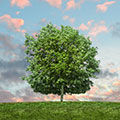
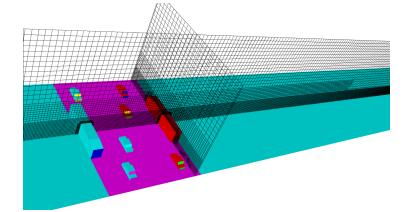
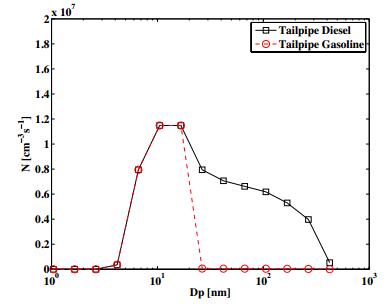
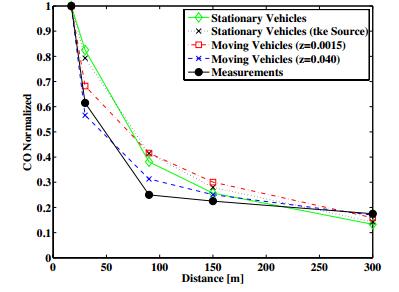
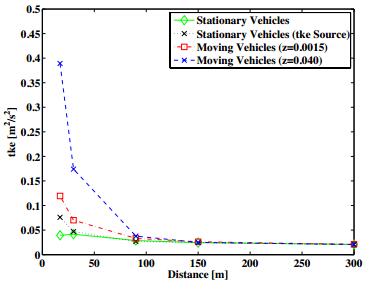
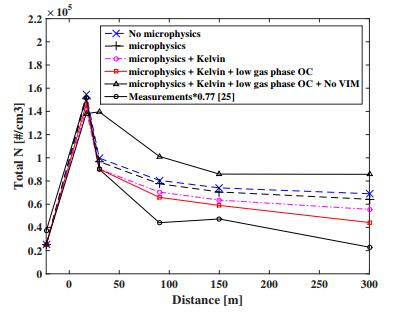
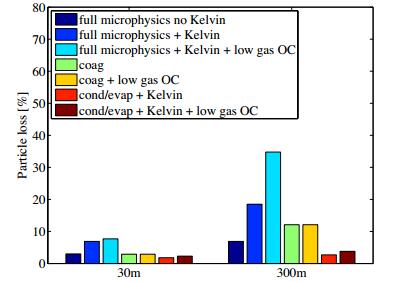
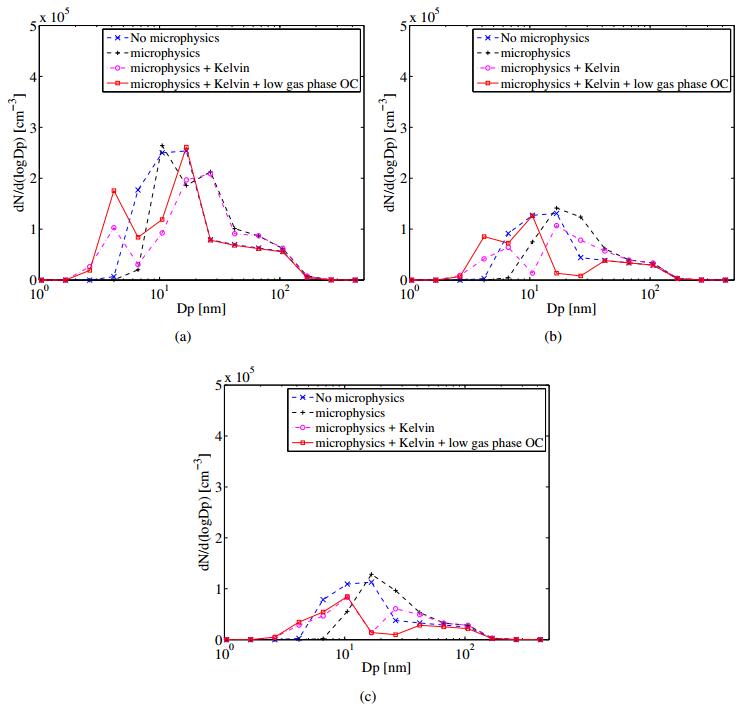
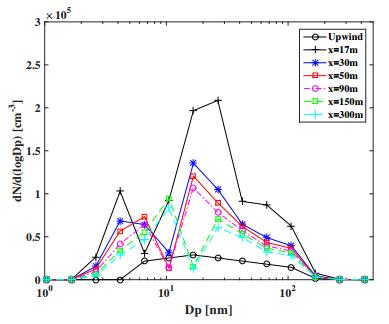
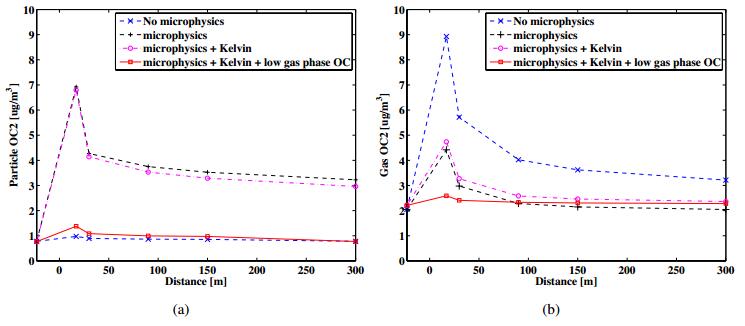
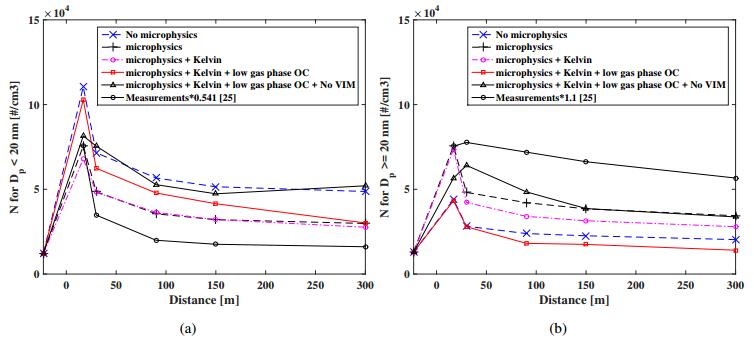



 DownLoad:
DownLoad: